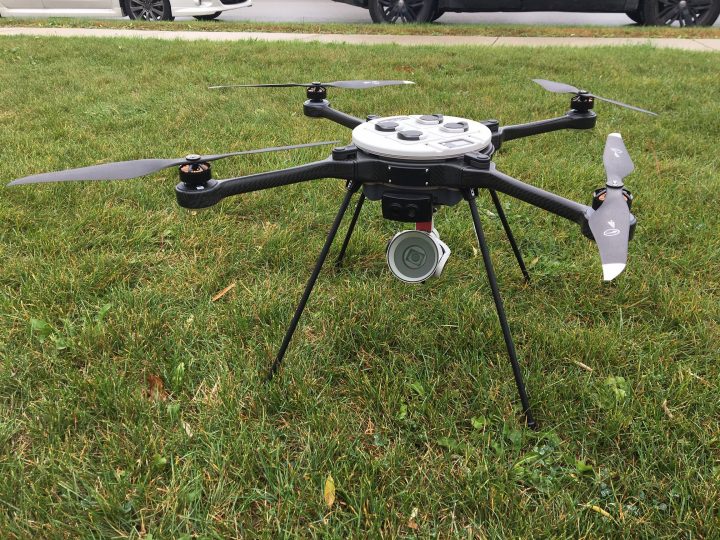A drone pilot from Ontario armed with Canadian-made drone technology is embarking on a mission to map the Bahamas a month after the country was devastated by Hurricane Dorian.

Andrew Huang, a manager at FLIR Systems in Waterloo, flew out from Toronto on Friday morning for Freeport. He will work with the non-profit GlobalMedic to map damaged areas in the country for the government to use in its rebuilding efforts.
“There’s some nervousness, some anxiety, but nonetheless well-prepared,” Huang said, who has also volunteered on similar missions in St. Martin and Nepal.
“We will be going to the neighbourhoods where all the homes and buildings have been destroyed by Hurricane Dorian. We’ll be taking some high-resolution photos and stitching them together to produce some very clear, almost real-time maps.”
The Category 5 storm made landfall in the Bahamas on Sept. 1, killing more than 50 people and forcing the evacuation of nearly 5,000 people from their homes.
A team from GlobalMedic has been on the ground in the country since Sept. 4, working to provide critical needs like food and water. They have distributed emergency kits containing water purification solution, hygiene items and a solar light, as well as food kits filled with staple items like rice and kidney beans.
Rahul Singh, GlobalMedic’s executive director, told Global News the drone mission will help the Bahamian government secure funding to rebuild.
“It just helps them push them further in their step toward rebuilding and it kick-starts the process that much faster.”
Drone technology in disaster response
Huang’s drone for the mission, the SkyRanger R70, was designed, built and tested in Waterloo at FLIR Systems, formerly known as Aeryon Labs. Huang said the wide-ranging conditions over Ontario’s four seasons allow engineers to prepare it to operate in some of the toughest conditions all over the world.
“Our aircraft has been designed to withstand harsh environments in very high winds in high temperatures that we could potentially see in the Bahamas as storms continue to brew,” he added.
Trevor Bergmann, the CEO of Halifax-based drone operator AeroVision Canada, said the devices have become an essential part of emergency response.
“You have the analysis component. We know what happened — there was a hurricane — well what was the effect on our area? How many displaced people do we have? Do we have road closures? Do we have wash-outs? Do we have a massive fracture running through it where we’re going to have to set up a temporary bridge structure?” Bergmann said.
He said he believes the role of drones in disaster response will continue to grow to include large, helicopter-like unmanned aircraft transporting goods and even performing rescues.
“Where we’re going with this technology is the transfer of aid and supplies in and out of areas or in some cases — and I don’t think this is too far in the future — being able to airlift somebody right out of the water or right off of a roof without having to have helicopters doing the work for them.” he said.
GlobalMedic first used drones following the catastrophic earthquake in Haiti in 2010. The Bahamas is the 15th country where it has used the devices. Singh said the hard data gathered by the devices helps him make better decisions.
“I’m an emergency data manager. I make decisions that impact people’s lives all the time,” he said.
“I want better information because if I have better information faster, my decisions will be better — meaning more aid is delivered more quickly, which means more people are helped.”
Meanwhile, Huang said he expects his drone-mapping work in the Bahamas to last two weeks.
“Being able to participate with GlobalMedic in these type of missions is extremely rewarding and essentially is why all of us here at FLIR Systems come to work every day to build a piece of equipment that helps save lives and livelihoods,” he said.



Comments